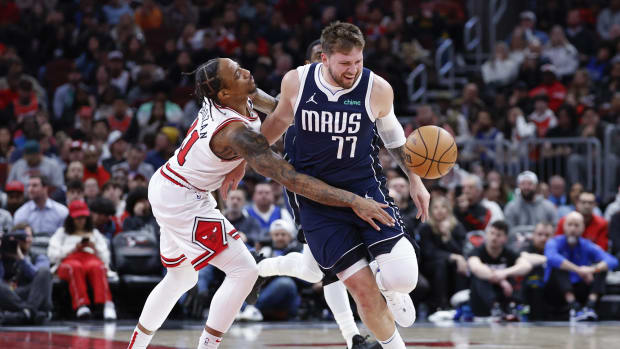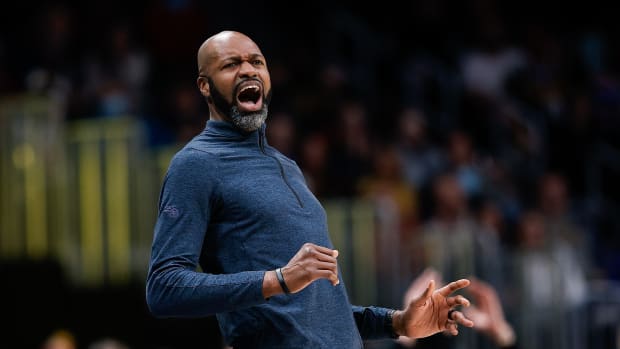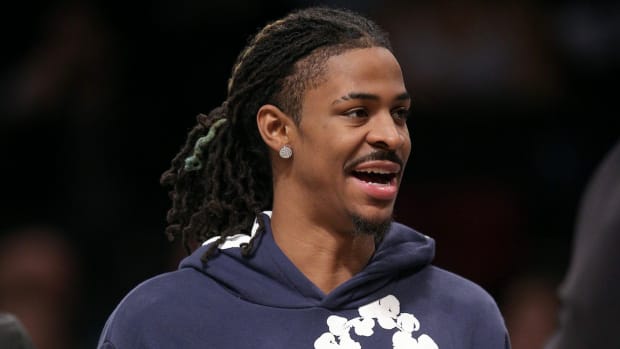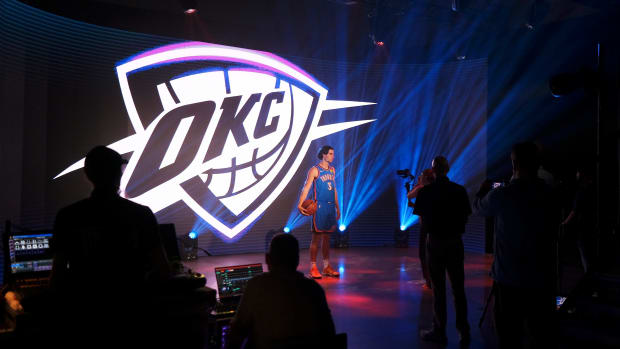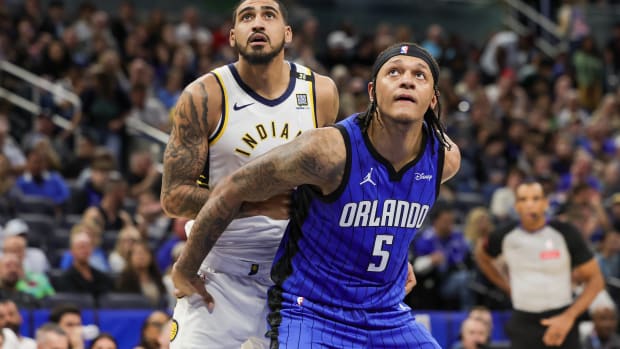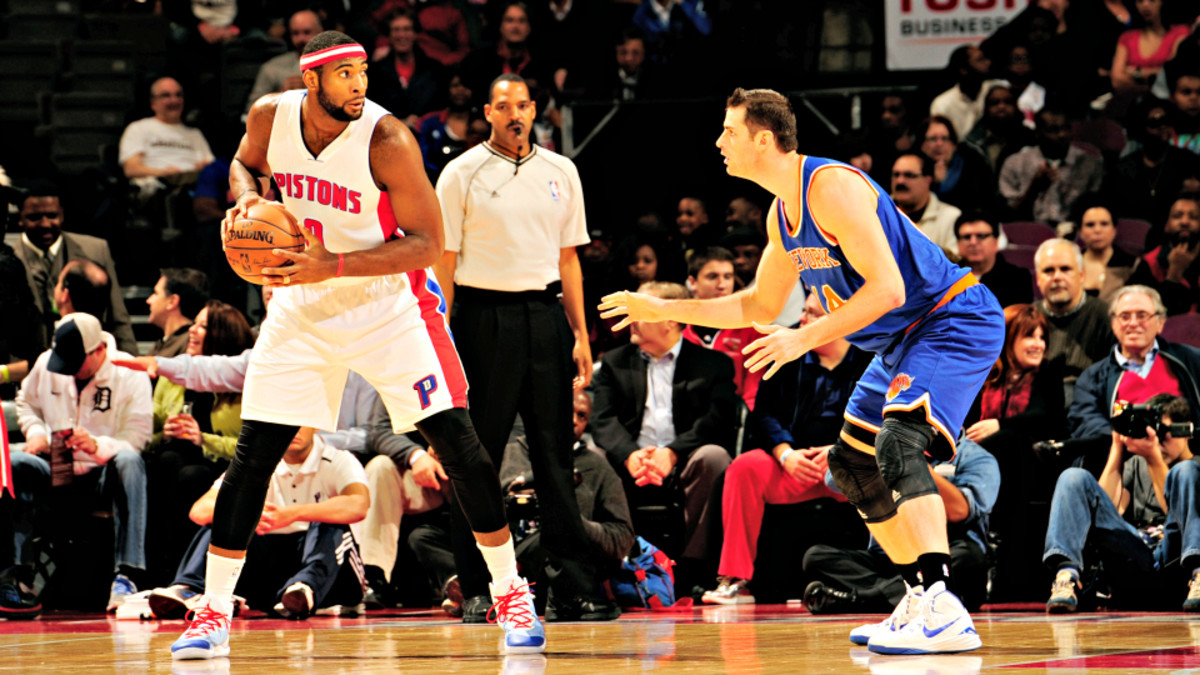
The Fundamentals: Pistons waiting for development of Andre Drummond
In the last two seasons of hopeless, hapless Detroit basketball, the play of Andre Drummond offered the Pistons a slim silver lining. His every success came in spite of his surroundings: astonishing pick-and-rolls pulled off in cramped space, cuts redeemed opposite sub-par playmakers and remarkable production notched for coaches who didn't trust him from within systems that did him no favors. Any view of Drummond's future seemed favorable for all that he had already endured.
Then came Stan Van Gundy, the man who would turn Drummond's world upside down. When hired as Detroit's head coach and team president back in May, Van Gundy quickly identified Drummond as the core element of the team.
"There's nothing about Andre Drummond that doesn't appeal to me," Van Gundy said in his introductory press conference. "I think [this because of] his athleticism, what he's accomplished at a young age. And I was very impressed with my first phone call with him. ... The guy, man, he was asking questions like, 'What do I do? What do I need to do?' He's a guy that wants to be great."
Yet in his term under Van Gundy thus far, Drummond has been an uncharacteristic mess -- not only raw in all the ways we'd come to expect, but shoddy by the numbers in a way he had never been previously. Drummond's turnover rate has leapt relative to last season, nipping at his trademark standards of high efficiency. The real killer, though: Drummond's incontrovertibly elite field goal percentage -- forged from powerful finishes and opportune positioning -- has taken a turn. Even after the boost of his 11-of-15 shooting performance against the Bucks on Tuesday, Drummond has made just 43.4 percent of his field goal attempts on the season. That figure is some 19 percentage points lower than his conversion rate last year and somehow lower than the field goal percentage of the indiscriminate Brandon Jennings. It's up for debate which characterization is more sobering.
The underlying cause is Drummond's progress, not regress. While some NBA players improve by obscuring weakness, the 21-year-old Drummond leans purposefully into his limitations. If given the chance to score on put-backs, duck-ins, and lobs as exclusively as he was on Tuesday, Drummond can be every bit the force he was in the last two seasons. Yet in aspiring for something more, Drummond has accepted a hit to his immediate efficiency with the hope for an eventual return.
, according to Synergy Sports, and now accounts for almost 40 percent of his total possessions. The only problem: Drummond is ever so slightly inconvenienced in this new role by the fact that he's not a very good post player. Consider the following:
a) Drummond makes just 36.2 percent of his attempts from the post, as he's both limited in direction and repertoire;
b) On those occasions where Drummond is able to draw a foul on his opponent, he makes just 43.9 percent of his free throws;
c) Otherwise, Drummond turns the ball over on just 11.4 percent of his possessions when working with his back to the basket.
Such a combination does not warrant repeated post-ups as a primary function of a team's offense. Drummond's potential, however, does. For the moment, then, Van Gundy accepts what Drummond cannot do as a precursor to future capability.
"The skills are coming," Van Gundy said, per The Detroit News. "It's the mentality of being a low-post guy and being in games that he needs to develop."
This kind of approach might seem foreign in Detroit, where short-leashed coaches for years have done whatever necessary to maximize their immediate win totals. Van Gundy, however, negotiated in his deal for the luxury of patience. He procured a team president role, and with it final say in basketball personnel decisions (his own status as head coach included). He signed a five-year contract worth $35 million, an arrangement that in itself shields Van Gundy from short-sighted pressures. There is still an urgency within the organization for the Pistons to be better than they currently are, but Van Gundy at least has some safety in balancing the team's current and long-term interests.
That's healthy for the Pistons, even if the direct result is a barrage of errant Drummond hook shots. The flashes of the future are already here -- not only in moments of explosion, but in exhibition of technique:
Yet for now, most of Drummond's moves are overly conscious. There's a premeditation to his footwork that just doesn't work at the NBA level; by focusing too much on a single move, players like Drummond sometimes find themselves forced into a bad angle or trapped on a dead-end pivot. The only way to advance beyond that point is to execute moves so often that they become part of a reactive string: move and counter as a compound process.
This is how you turn an extraordinary prospect like Drummond into an every-night weapon. Already he's a huge factor on the offensive glass and top-flight pick-and-roll finisher. What he needs is some more easily accessible avenue for offense to leverage his size more consistently. Overfeeding Drummond in the post now is a means to that end, if also something of a burden for a team that currently ranks 28th in points per possession.
Detroit's incompetence in that regard is hardly the sole fault of Drummond, who for all of this emphasis on post play averages fewer than 10 field goal attempts per game -- the fifth-highest mark on the team. Even on those shots Drummond does attempt, however, so much of the setup is so wooden as to offer little benefit. This isn't simply a young center adapting to the post, after all, but an entire roster picking up new plays in an entirely different style from what they're accustomed to. Just 14 games into the season, much of it still comes off as rote memory rather than adaptive basketball:
Every cut and pass is telegraphed to the point that we can practically read the script. Such robotic execution saps a set play of any action-to-action momentum, which in this case creates a tougher post-up for Drummond that begins against a set defender a bit further from the rim than he'd like. He'll eventually learn how to time his seal for better positioning and Drummond's teammates will develop a feel for leading in to his post-ups for better results. For now, though, there's simply no way for Detroit to be but awkward. Too much is too new, even for a roster core that was in a similar sense of disarray a season ago.
Things will get better for Drummond and the Pistons in time, though this season should be framed more by incremental progress than legitimate breakthrough. Their new way forward is unhurried, if fraught with clumsy footwork and airballed hook shots. This is the cost of transformation -- one that Drummond, Van Gundy and the Pistons on the whole pay hopefully.






























